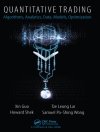In the modern world, data is a vital asset for any organization, regardless of industry or size. The world is built upon data. However, data without knowledge is useless. The aim of this book, briefly, is to introduce new approaches that can be used to shape and forecast the future by combining the two disciplines of Statistics and Economics.
Readers of Modeling and Advanced Techniques in Modern Economics can find valuable information from a diverse group of experts on topics such as finance, econometric models, stochastic financial models and machine learning, and application of models to financial and macroeconomic data.
Contents:
- Smart Growth Developments of Europe Union Members by Europe 2020 Strategies (Şahika Gökmen and Johan Lyhagen)
- Spatial Regression Model Specification and Measurement Errors (Anıl Eralp and Rukiye Dağalp)
- Determining Harmonic Fluctuations in Food Inflation (Yılmaz Akdi, Kamil Demirberk Ünlü, Cem Baş, and Yunus Emre Karamanoğlu)
- Nonlinear and Chaotic Time Series Analysis (Baki Ünal and Çağdaş Hakan Aladağ)
- A Fiducial-based Test for the Equality of Location Parameters (Gamze Güven, Özge Gürer, Hatice Samkar, and Birdal Şenoğlu)
- Understanding the Effects of Green Swan Events on Financial Stability: Annex II Countries and Turkey (Şenay Açıkgöz and Şahika Gökmen)
- Forecasting the BIST 100 Index with Support Vector Machines (Kamil Demirberk Ünlü, Nihan Potas, and Mehmet Yılmaz)
- Multiple Objective Optimization with Weighted Superposition Attraction–Repulsion Algorithm (mo WSAR) Algorithm (Adil Baykasoğlu)
- Time Series Modeling with Deep Neural Networks (Çağatay Bal and Çağdaş Hakan Aladağ)
- An Extension of the Inverse Gaussian Distribution (Talha Arslan)
- Clustering Eurozone Countries According to Employee Contributions Before and After COVID-19 (Hüseyin Ünözkan, Nihan Potas, and Mehmet Yılmaz)
- Criteria for Best Architecture Selection in Artificial Neural Networks (Çağatay Bal and Serdar Demir)
Readership: The book is primarily aimed at academics, researchers, and postgraduate students interested in new economic perspectives with modeling and advanced techniques. A secondary audience involves practitioners and policymakers from diverse related fields.
Key Features:
- The book will be defined as a new economic perspective
- Brought an interdisciplinary perspective to economic modeling
- Opened new discussions regarding to real data modeling












